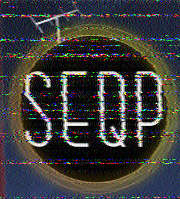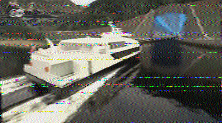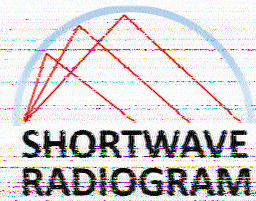 Shortwave Radiogram
Shortwave Radiogram
In March 2013 The Voice of America (VOA) started an experiment called the VOA Radiogram which transmitted digital text and images using the powerful 50 year old analog shortwave broadcast transmitter at the Edward R. Murrow Transmitting Station near Greenville, North Carolina.
The idea was anyone could receive the radiogram on any shortwave radio, even an inexpensive portable one with no SSB capability. By feeding the audio from the radio to a computer, either by a audio lead or even using the a microphone the listener could decode the text and images using simple software.
I had seen mention and reports on social media of people receiving them but somehow never got around to trying it myself.
VOA ended the experiment back in June this year a week before the retirement of the program producer Dr. Kim Andrew Elliott. An offer to continue the broadcasts on a contract basis was declined, so a follow-on show called Shortwave Radiogram began transmission from the WRMI Radio Miami International transmitting site in Okeechobee, Florida and Space Line in Bulgaria.
The Shortwave Radiogram transmission schedule is (at the time of writing and all times UTC)
Saturday 1600-1630 9400 kHz
Sunday 0600-0630 7730 kHz
Sunday 2030-2100 11580 kHz
Sunday 2330-2400 11580 kHz
All via WRMI except for 9400 kHz, which is via Space Line in Bulgaria.
I spotted a tweet a few weeks back (can't remember who from) mentioning the @SWRadiogram so my interest was piqued, I wasn't around for this weekends Saturday transmission in Europe but had a go on Sunday for the one from America. I wasn't expecting great things due to the levels of noise and poor conditions of late.
I have the decoding program FLdigi already installed on my computer for other datamodes and for information on how to decode the radiograms (sent using MFSK32) visit this page
On the 0600UTC transmission I managed just one poor image
but during the Sunday 2030UTC transmission I got four decent images, the fifth was lost to QRM
I also made two short videos (on hand held mobile phone so a bit shaky) which show the incoming text and images.
Andrew Garratt, MØNRD, is a regular contributor to AmateurRadio.com and writes from East Midlands, England. Contact him at nerdsville@gmail.com.The idea was anyone could receive the radiogram on any shortwave radio, even an inexpensive portable one with no SSB capability. By feeding the audio from the radio to a computer, either by a audio lead or even using the a microphone the listener could decode the text and images using simple software.
I had seen mention and reports on social media of people receiving them but somehow never got around to trying it myself.
VOA ended the experiment back in June this year a week before the retirement of the program producer Dr. Kim Andrew Elliott. An offer to continue the broadcasts on a contract basis was declined, so a follow-on show called Shortwave Radiogram began transmission from the WRMI Radio Miami International transmitting site in Okeechobee, Florida and Space Line in Bulgaria.
The Shortwave Radiogram transmission schedule is (at the time of writing and all times UTC)
Saturday 1600-1630 9400 kHz
Sunday 0600-0630 7730 kHz
Sunday 2030-2100 11580 kHz
Sunday 2330-2400 11580 kHz
All via WRMI except for 9400 kHz, which is via Space Line in Bulgaria.
I spotted a tweet a few weeks back (can't remember who from) mentioning the @SWRadiogram so my interest was piqued, I wasn't around for this weekends Saturday transmission in Europe but had a go on Sunday for the one from America. I wasn't expecting great things due to the levels of noise and poor conditions of late.
I have the decoding program FLdigi already installed on my computer for other datamodes and for information on how to decode the radiograms (sent using MFSK32) visit this page
On the 0600UTC transmission I managed just one poor image
but during the Sunday 2030UTC transmission I got four decent images, the fifth was lost to QRM
I also made two short videos (on hand held mobile phone so a bit shaky) which show the incoming text and images.



















I just have to comment on the change of use of terminology since the 1950s.
When I worked in the local Radio/TV sales/repair shop we supplied and repaired, inter alia, gramophones and radiograms. A shortwave radiogram tuned over the Long, Medium and Short-wave bands; played 78 r.p.m. records and the latest models had 33 r.p.m. capability. A wooden radiogram was usually a nice piece of furniture with a large loudspeaker enclosed to provide a musical “good tone”.
We listened to jazz arriving via the Voice of America coming from AFN Frankfurt. These radiograms were gradually replaced by Console model TV sets when Television distribution reached Northern England. As we enjoyed the black and white TV images of the Coronation of Elizabeth II, no-one could have imagined that a radiogram would morph into a picture arriving by radio.
I enjoy reading the Amateur Radio Newsletter, please keep it coming.